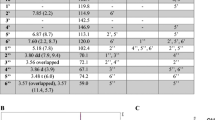Abstract
A recent investigation has indicated that reactive oxygen species (ROS) may play an important role in the activation of lymphocytes. The main aim of the present study is to find out what effect on lymphocyte activation is attributable to radical scavengers (RSs). AD0261 (AD) is a novel RS which displays strong inhibitory action on the generation of lipid peroxides and superoxide anions. This compound has been shown to be effective in inhibiting tritiated thymidine ([3H]TdR) incorporation into, IL-2 release from and IL-2 receptor (Rc) expression on Con A-stimulated mouse spleen cells and PHA-P-stimulated lymphocytes of human peripheral blood, IC50 values being in the range 1–10 μM. It also inhibited erythema formation elicited by transferring PHA-P-stimulated lymphocytes into guinea pigs (30–40% inhibition at 10 μM,p<0.05). Further study showed that the activity of ornithine decarboxylase (ODC), which is a critical enzyme for cell proliferation, was inhibited by AD in a dose-dependent manner (IC50=1.0 μM). In summary, AD would seem to affect the lymphocyte activation by inhibiting ODC activity, probably through the action of ROS trapping.
Similar content being viewed by others
References
J. M. McCord,Free radical and inflammation; protection of synovial fluid by superoxide dismutase. Science185, 1529–1531 (1974).
R. K. Fidelus,The generation of oxygen radicals: A positive signal for lymphocyte activation. Cell. Immunol.113, 175–182 (1988).
J. Dornald and M. Gerber,Inhibition of murine T-cell responses by anti-oxidants: The targets of lipo-oxygenase pathway inhibitors. Immunology68, 384–391 (1989).
N. H. Hunt and J. C. Fragonas,Effects of anti-oxidants on ornithine decarboxylase in mitogenically-activated T-lymphocytes. Biochim. Biophys. Acta1133, 261–267 (1992).
J. Dornald, J. C. Bonnafous, J. Favero and J. C. Mani,Ecto-5′-nucleotidase and adenosine deaminase activities of lymphoid cells. Biochem. Med.28, 144–156 (1982).
A. Koda, I. Nakatomi, K. Nakamura, H. Inoue and T. Kamimura,Inhibition of delayed hypersensitivity reactions by a new agent, cis-1-methyl-4-isohexylcyclohexane carboxylic acid (IG-10). Int. J. Immunopharmacol.,7, 41–49 (1985).
L. A. Lynn, M. R. Smith, N. K. Bhat and S. K. Durum,IL-1 induces ornithine decarboxylase in normal T lymphocytes. J. Immunol.146, 1509–1515 (1991).
Author information
Authors and Affiliations
Rights and permissions
About this article
Cite this article
Sugiura, M., Wada, J., Kuwahara, S. et al. Effect of the novel radical scavenger AD0261 on lymphocyte activation. Agents and Actions 41 (Suppl 2), C216–C218 (1994). https://doi.org/10.1007/BF01987643
Issue Date:
DOI: https://doi.org/10.1007/BF01987643




